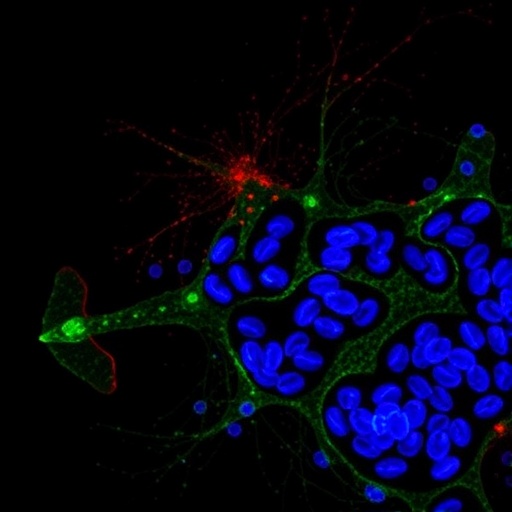
In an exciting breakthrough that could significantly impact diabetes treatment, researchers have focused on Deoxynojirimycin derivatives as potent α-glucosidase inhibitors. This innovative study taps into the potential of these compounds to modulate glycemic response, offering novel pathways for managing carbohydrate metabolism in patients with type 2 diabetes. The research highlights an intersection of biochemistry and computational modeling, reflecting how modern techniques can accelerate the discovery of therapeutics.
In an era where diabetes prevalence is escalating globally, finding effective α-glucosidase inhibitors is essential. These inhibitors, which work by slowing the absorption of carbohydrates in the intestines, play a critical role in controlling postprandial blood glucose levels. The ability to harness compounds like Deoxynojirimycin derivatives gives hope for new medications that can contribute to better glycemic control and improved patient outcomes.
The research conducted by Khan, Ahmad, and Osama provides substantial insights through a combination of in silico ADMET evaluation, molecular dynamics simulations, and in vitro validation studies. In silico methods allow researchers to predict the absorption, distribution, metabolism, excretion, and toxicity (ADMET) of each compound. This initial digital screening significantly narrows down potentially viable candidates for subsequent laboratory testing, enhancing the efficiency of drug discovery efforts.
Molecular dynamics simulations played a pivotal role in the study, enabling researchers to observe how Deoxynojirimycin derivatives interact at the atomic level with α-glucosidase enzymes. This computational approach not only sheds light on the binding affinity of these compounds but also informs potential modifications that could enhance their inhibitory effects. Such detailed modeling is essential for understanding the mechanisms through which these derivatives exert their therapeutic actions.
In vitro validation further cements the efficacy of Deoxynojirimycin derivatives as α-glucosidase inhibitors. The laboratory experiments confirmed the computational predictions, demonstrating that these compounds effectively inhibit the enzyme’s activity in human samples. This critical step in the research trajectory underlines the importance of integrating computational findings with practical experiments to ensure robust evidence supports the therapeutic promises of novel compounds.
The findings from this research pave the way for more extensive clinical investigations. By demonstrating that Deoxynojirimycin derivatives can effectively inhibit α-glucosidase, the study suggests that these compounds could be subjected to further testing in clinical trials. Given the rising interest in personalized medicine, incorporating such compounds into treatment regimens may cater to specific patient needs and enhance overall therapeutic efficacy.
Moreover, the innovative use of molecular dynamics simulations and in silico ADMET predictions underlies a broader trend in pharmaceutical development. As researchers increasingly turn to computational tools to accelerate the discovery process, the potential for novel therapeutics becomes more accessible. The confluence of computational chemistry with traditional drug discovery is poised to usher in a new era of rapid drug development tailored for modern medical challenges.
In light of the study’s promising results, it is vital to consider the implications of integrating Deoxynojirimycin derivatives into existing treatment paradigms for diabetes. The effectiveness of these compounds, coupled with their relatively low toxicity profile, points to their suitability for incorporation into therapeutic strategies aimed at managing blood glucose levels. This could ultimately lead to reduced reliance on existing medications, many of which are associated with significant side effects.
Furthermore, the research encourages a holistic approach to diabetes treatment, which encompasses dietary management alongside pharmacological interventions. Understanding the role of α-glucosidase inhibitors in carbohydrate metabolism serves to inform dietary guidelines for patients, emphasizing the need for personalized nutritional strategies that align with pharmacotherapy.
The collaborative nature of the study, bringing together various experts in biochemistry, pharmacology, and computational modeling, demonstrates the importance of interdisciplinary approaches in scientific research. Such collaborations not only enhance the quality of the outcomes but also foster innovation that can lead to novel solutions for complex health challenges.
As the study gains traction in the scientific community, it is expected to generate significant interest among pharmaceutical companies looking to invest in the development of β-glucosidase inhibitors. The potential market for these compounds, considering the rising prevalence of diabetes worldwide, opens up exciting avenues for commercial partnerships and advancements in diabetes management.
In conclusion, the future seems promising for the application of Deoxynojirimycin derivatives as effective α-glucosidase inhibitors. This pioneering research not only strengthens the foundation for future studies but also emphasizes the potential to improve patient care within a growing field of pharmacotherapy for diabetes. It signifies a critical step toward enhancing treatment options, addressing an urgent global health challenge that requires immediate attention and innovative strategies.
This groundbreaking study exemplifies how integrating modern computational techniques with experimental validations can feasibly lead to the discovery of effective therapeutic agents. As researchers continue to explore the vast landscape of medicinal chemistry, there is no doubt that the journey of Deoxynojirimycin derivatives has just begun, with many more discoveries and advancements yet to come.
Subject of Research: Deoxynojirimycin derivatives as potent α-glucosidase inhibitors
Article Title: Deoxynojirimycin derivatives as potent α-glucosidase inhibitors: in silico ADMET evaluation, molecular dynamics and in vitro validation studies
Article References:
Khan, F., Ahmad, S., Osama, K. et al. Deoxynojirimycin derivatives as potent α-glucosidase inhibitors: in silico ADMET evaluation, molecular dynamics and in vitro validation studies.
Mol Divers (2025). https://doi.org/10.1007/s11030-025-11307-2
Image Credits: AI Generated
DOI: 10.1007/s11030-025-11307-2
Keywords: α-glucosidase inhibitors, Deoxynojirimycin, diabetes treatment, ADMET evaluation, molecular dynamics, pharmacotherapy
Tags: biochemical research discoveriescarbohydrate metabolism managementcomputational modeling in drug discoveryDeoxynojirimycin derivativesdiabetes treatment advancementsglycemic response modulationin silico ADMET evaluationinnovative therapeutic pathwaysmolecular dynamics simulationspostprandial blood glucose controltype 2 diabetes therapiesα-glucosidase inhibitors




